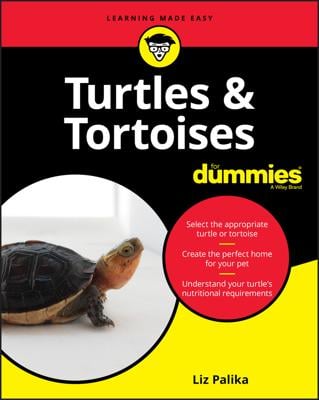Reptiles and amphibians make unique pets. They have few emotional demands, but they do have precise physical needs. And because pet reptiles and amphibians are in cages and can't seek food on their own, they depend on you for the right nourishment. Some reptiles and amphibians have considerably long lives, so be prepared for that. (Reptiles and amphibians are also known as herps, from herpetology — the study of reptiles and amphibians.)
Factors to Consider before Buying a Reptile or Amphibian
Do your homework before buying a reptile or amphibian. Consider the following: Do you have the time and money to feed and care for it? Do you have allergies? Reptiles and amphibians are low-risk, allergy-wise, but not risk-free. Will children be around the pet (some herps are poisonous)?
Probably the best-known herp disease risk is salmonella, which reptiles and amphibians carry on the body. If you handle a herp and then eat something straight from your hand, touch your lips, or kiss someone on the lips, you risk infecting yourself or that person. To prevent spreading salmonella, simply wash your hands after handling your herp to minimize any risk of salmonella infection.
Other safety considerations when purchasing a herp include his temperament, his response to humans, and whether he’s likely to escape from his cage:
| Safety factor | Turtle | Snake | Lizard | Frog | Salamander |
|---|---|---|---|---|---|
| Speed of movement | Slow | Fast | Fast | Fast | Slow |
| Ability to escape caging | Low | High | Medium | Medium | Low |
| Calmness of temperament | Calm | Medium | Medium | Nervous | Calm |
| Positive response to humans | High | Neutral | Medium | Neutral | Neutral |
What to Feed Reptiles and Amphibians
Before you bring home a reptile or amphibian, consider the kind of food you’re willing to feed it. The food preferences of reptiles and amphibians fall into three general groups: carnivores, herbivores, and omnivores. So if you’d feel squeamish about feeding a rabbit to a snake, then don’t get a python.
Foods for Herbivorous Herps
| Alfalfa | Escarole | Papaya |
| Apple | Grated root crops (such as carrots and beets) | Peaches |
| Avocado | Grated or chopped yellow or zucchini squash | Pear |
| Berries | Greens (turnip, collard, mustard, beet) | Romaine lettuce |
| Bok choy | Hibiscus blooms and leaves | Rose petals |
| Broccoli stems and leaves | Melons | Squash (chopped) |
| Cabbage (dark green) | Nasturtium | Tofu |
| Dandelions | Okra | Tomato |
Foods for Carnivorous Herps
| Chicken (bite-sized cooked cubes) | Mealworms |
| Cockroaches (giant or hissing) | Mice or rats |
| Crickets | Prepared reptile carnivore diet (canned or frozen) |
| Earthworms | Rats |
| Locusts | Waxworms |
Typical Life Spans for Pet Reptiles and Amphibians
Some pet reptiles and amphibians are long-lived — you might need to provide for them in your will! Here are a few average life spans for some typical pet reptiles and amphibians:
- Tiger salamander (Ambystoma tigrinum): 10 to 25 years
- Two-toed amphiuma (Amphiuma means): 14 to 24 years
- Barking treefrog (Hyla gratiosa): 7 years
- Boa constrictor (Boa constrictor contrictor): 38 years
- Rainbow boa (Epicrates cenchia cenchia): 10 years
- Corn snake (Elaphe guttata guttata): 21 years
- Reeve’s turtle (Chinemys reevsi): 24 years
- Helmeted turtles (Pelomedusa subrufa subrufa): 16 years
- Leopard gecko (Eublepharis macularius): 20 years
- Green anole (Anolis carolinensis): 7 years

